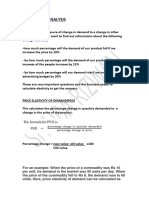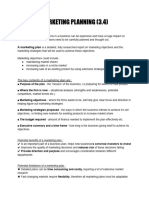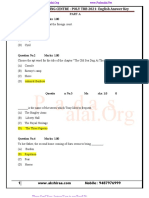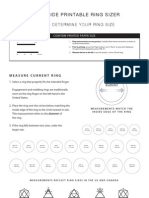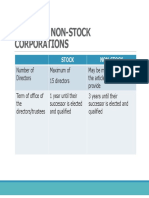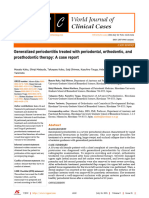Implications of Elasticities of Demand
Elasticities of demand provide insights into how changes in various factors affect the quantity
demanded of a good or service. Let's explore the implications of price elasticity of demand,
promotional elasticity, income elasticity, and cross elasticity on consumers, producers, and
businesses.
1. Price Elasticity of Demand (PED):
- Consumers:
- High Elasticity (Elastic Demand): If demand is elastic, consumers are responsive to
price changes. Businesses must be cautious with price increases, as it can lead to a significant
decrease in total revenue. On the other hand, price reductions may result in a proportionately
larger increase in quantity demanded, potentially increasing total revenue.
- Low Elasticity (Inelastic Demand): Inelastic demand implies that consumers are less
responsive to price changes. Producers may have more flexibility in setting prices, but they
need to carefully consider the potential impact on total revenue.
- Producers/Businesses:
- Understanding PED helps businesses make pricing decisions. In competitive markets with
elastic demand, price reductions can be a strategy to gain market share, while in inelastic
markets, businesses may have more pricing power.
- In the long term, businesses may need to consider adjusting their offerings or innovating
to make their products more elastic to price changes.
Analysis and Evaluation:
Substitutability: Businesses need to assess the availability of substitutes for their products. If
close substitutes exist, the demand is likely to be more elastic, and price changes will have a
significant impact on quantity demanded.
Definition Width: Narrowly defined products may have more elastic demand as consumers can
easily switch to alternatives. Broadly defined products may have more inelastic demand as
consumers may find fewer substitutes.
Amount Spent on the Product: For high-value products, consumers may be more price-
sensitive, leading to higher elasticity.
Time Period Consideration: In the short term, demand may be more inelastic as consumers
might not immediately adjust their behavior. In the long term, consumers may find alternatives,
making demand more elastic.
�2. Promotional Elasticity of Demand (PrED):
- Consumers:
- The effectiveness of promotions depends on how consumers respond. If promotional
elasticity is high, consumers are likely to be more responsive to promotional activities. This
means that sales promotions, discounts, or advertising can have a significant impact on
consumer behavior.
- Producers/Businesses:
- Understanding promotional elasticity helps businesses allocate their marketing budgets
effectively. High PrED may encourage businesses to invest more in promotional activities to
boost sales.
- Monitoring and analyzing the impact of different promotional strategies can guide
businesses in designing more effective marketing campaigns.
Analysis and Evaluation:
Effectiveness of Promotions: Businesses must gauge the effectiveness of promotional
activities. If PrED is high, promotions can significantly impact demand. Businesses need to
allocate resources based on the responsiveness of consumers to promotions.
Consumer Behavior: Understanding how consumers respond to various promotional strategies
helps businesses tailor their marketing efforts. High PrED suggests that consumers are more
likely to be influenced by promotions.
3. Income Elasticity of Demand (YED):
- Consumers:
- For normal goods, a positive income elasticity implies that as income rises, demand for
the good also increases. Luxury goods often have high income elasticity, while necessities tend
to have lower income elasticity.
- Producers/Businesses:
- Businesses can tailor their marketing strategies based on the income elasticity of their
products. For example, for goods with high income elasticity, marketing efforts may focus on
portraying the product as a luxury item.
Analysis and evaluation:
- Normal vs. Inferior Goods: Understanding whether a good is a normal or inferior good
is crucial. Normal goods have positive income elasticity, meaning demand increases with rising
incomes. For inferior goods, demand decreases as incomes rise.
� - Proportion of Income Spent: The proportion of income spent on a good influences its
elasticity. Necessities with a lower proportion may have lower elasticity, while luxury goods
with a higher proportion may have higher elasticity.
4. Cross Elasticity of Demand (XED):
- Consumers:
- Cross elasticity measures how the quantity demanded of one good responds to a change in
the price of another. Substitutable goods (positive XED) mean that consumers may switch
between products based on price changes.
- Producers/Businesses:
- Businesses can use cross elasticity information to assess the impact of competitors' price
changes. If two goods are substitutes, a price increase by one producer might lead to an increase
in demand for the other.
Which Measure is More Useful?
The usefulness of each measure depends on the context and the business's specific goals:
Price Elasticity (PED): This is crucial for pricing decisions. Businesses with elastic products
need to be cautious about price increases and may benefit from price reductions to stimulate
demand.
Income Elasticity (YED): This is important for understanding how changes in income levels
impact demand. Businesses can adjust their product positioning and marketing strategies based
on the income elasticity of their offerings.
Promotional Elasticity (PrED): This helps businesses optimize their marketing budget. High
PrED suggests that investments in promotions can yield substantial returns.
In conclusion, elasticities help both consumers and businesses make more informed decisions
regarding pricing, promotions, income changes, and competitive strategies. It allows
businesses to adapt their marketing and pricing strategies to better meet consumer demand and
maximize overall revenue.
Hence, a comprehensive understanding of all these elasticities is essential for a holistic business
strategy. Businesses should consider the nuances of their products, the market, and consumer
behavior to make informed decisions that maximize revenue and profit. It's not a matter of one
measure being more useful than another; rather, it's about integrating insights from all these
measures for a well-rounded strategy.










